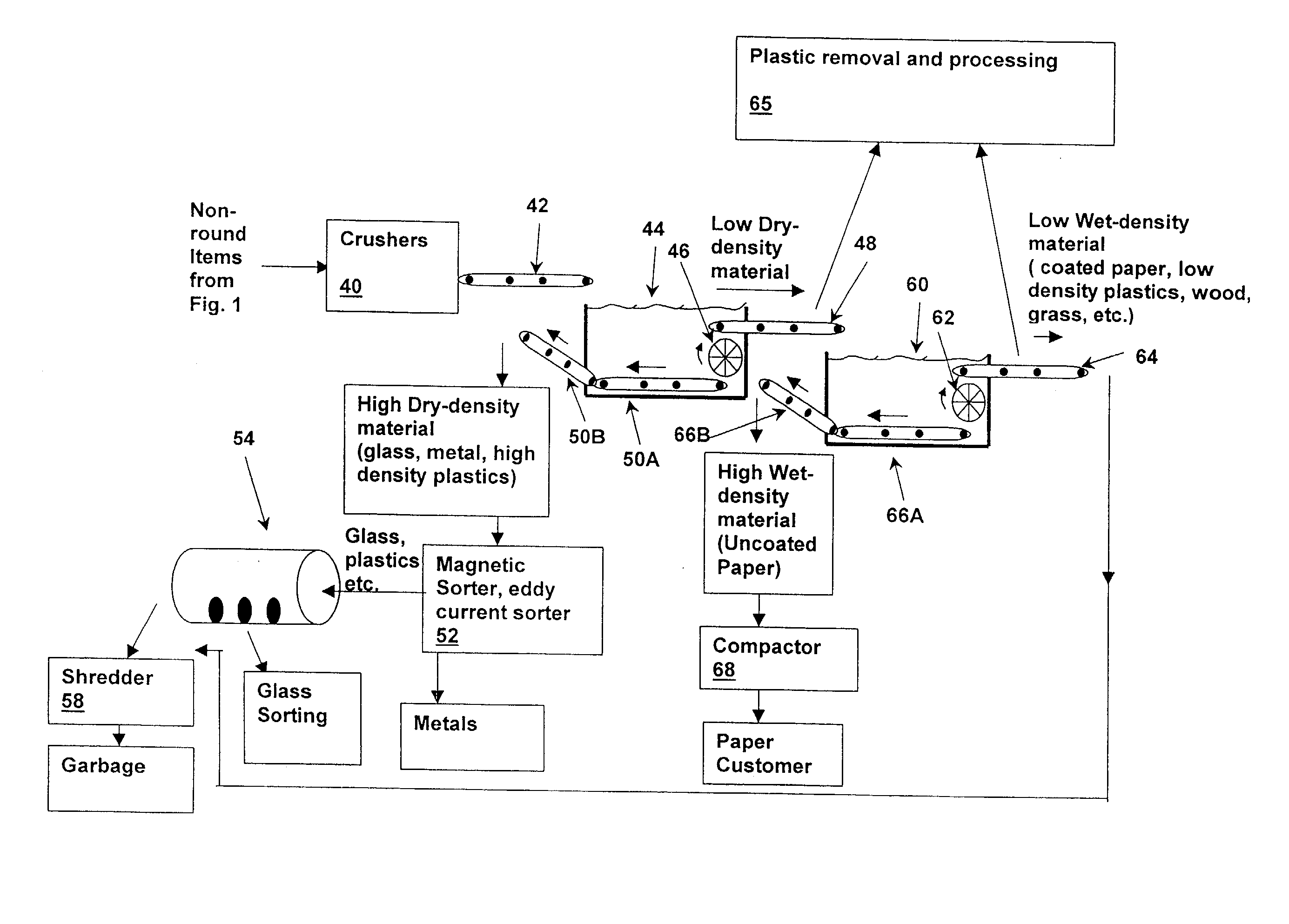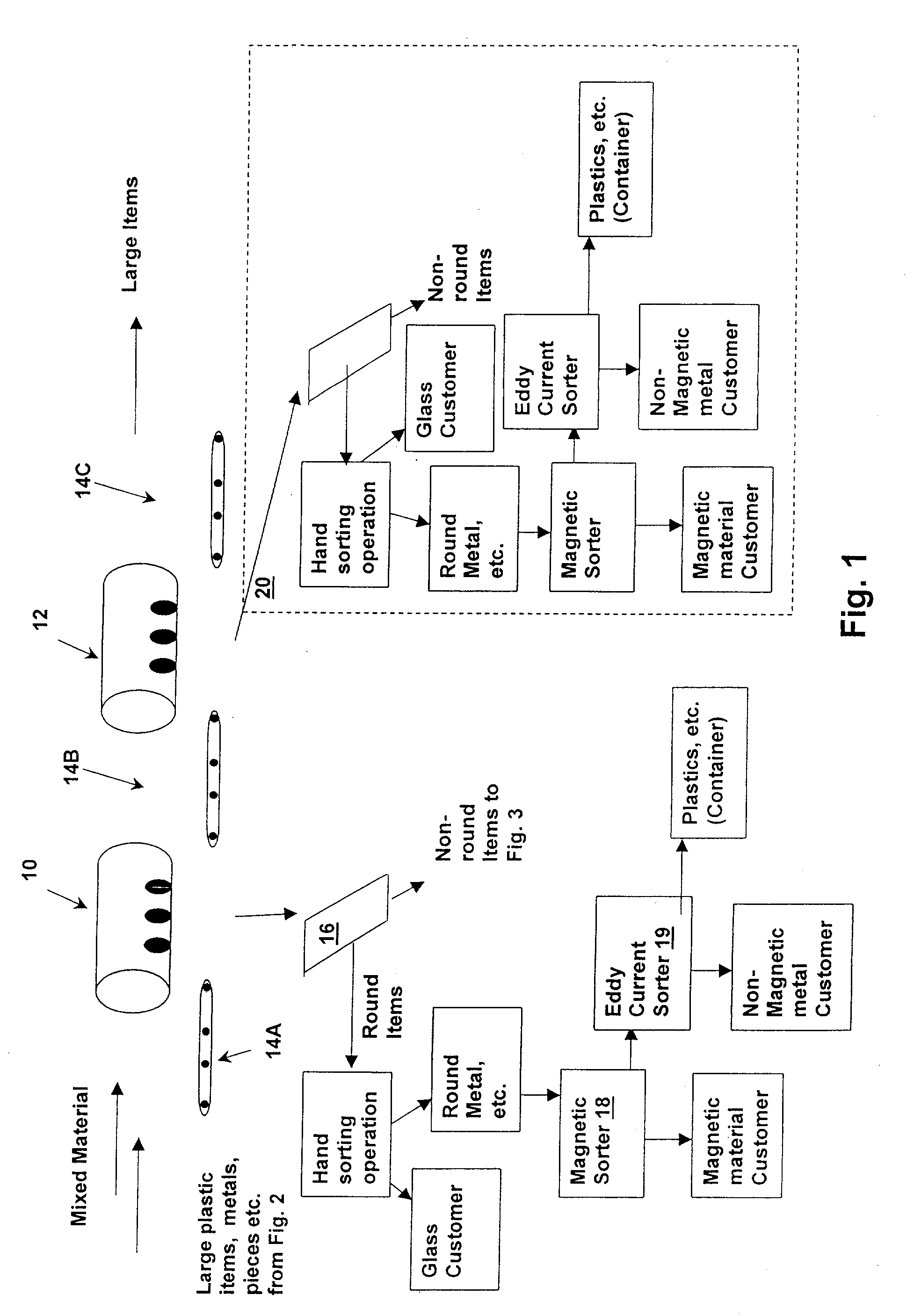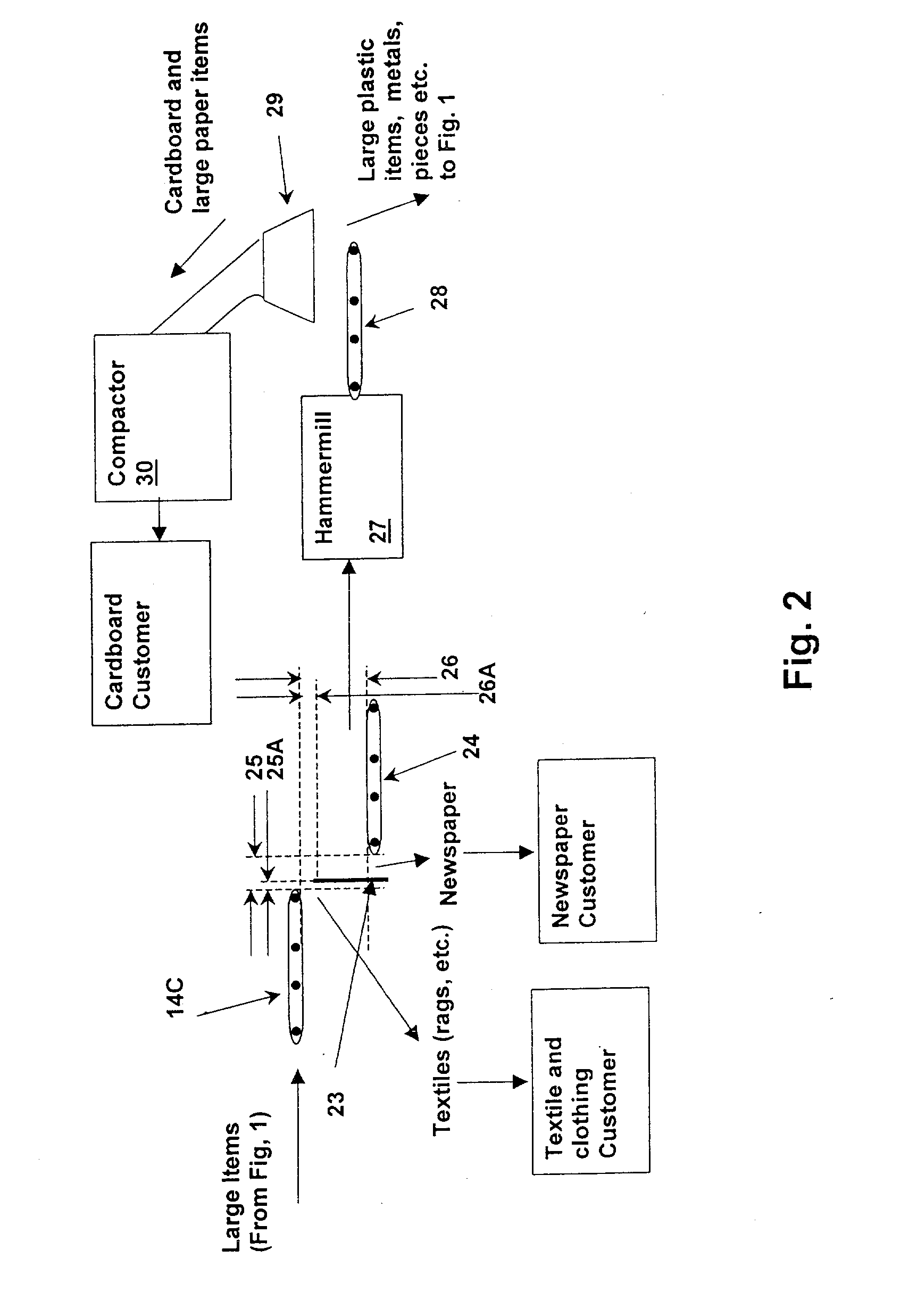Method and system for separating and sorting recyclable materials from mixed waste streams
- Summary
- Abstract
- Description
- Claims
- Application Information
AI Technical Summary
Problems solved by technology
Method used
Image
Examples
Embodiment Construction
[0034] Referring now to the figures and in particular to FIG. 1, a portion of a recyclable material processing system in accordance with an embodiment of the present invention is shown. Mixed material, which may be recyclable materials combined with trash or pre-sorted recyclable materials enter the system at the upper left corner of the diagram. The materials may be preprocessed in a sorting area to remove items that might otherwise cause problems in the system.
[0035] A conveyor 14A conducts the mixed material into a rotating cylindrical trommel 10 which has apertures sized to eject material under a predetermined size (generally 6 to 12 inches in diameter). The ejected material may be hand-sorted, or as depicted introduced to an inclined shaker 16 that ejects round objects to a hand-sorting operation. If bagged trash is to be received by the system, a rotating spiked trommel may be used for trommel 10, where internal spikes are welded to the inside wall of trommel 10 in advance of ...
PUM
| Property | Measurement | Unit |
|---|---|---|
| Length | aaaaa | aaaaa |
| Length | aaaaa | aaaaa |
| Length | aaaaa | aaaaa |
Abstract
Description
Claims
Application Information
 Login to View More
Login to View More - R&D
- Intellectual Property
- Life Sciences
- Materials
- Tech Scout
- Unparalleled Data Quality
- Higher Quality Content
- 60% Fewer Hallucinations
Browse by: Latest US Patents, China's latest patents, Technical Efficacy Thesaurus, Application Domain, Technology Topic, Popular Technical Reports.
© 2025 PatSnap. All rights reserved.Legal|Privacy policy|Modern Slavery Act Transparency Statement|Sitemap|About US| Contact US: help@patsnap.com



